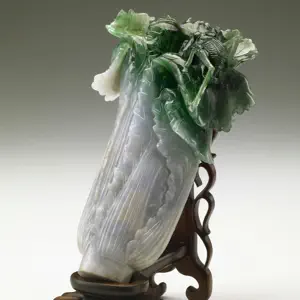Ep. 296 | Sino-Roman Relations (Part 2)
In this episode, we will finish up this overview of the relations between Rome and China. The Roman Empire in the West ended in 476. In this Part 2 episode, we'll look at relations between the Byzantine Empire and China during the Tang, Song, and Yuan. As you'll soon discover the Nestorians and then later the Catholics led by John of Montecorvino dominated official and unofficial relations between the Eastern Roman Empire and the Empire of China.
Listen On Your Favorite Podcast Player
Terms in Episode
| Pinyin/Term | Chinese | English/Meaning |
|---|---|---|
| Táng | 唐朝 | Dynasty thay ran 618 to 907 |
| Sòng | 宋朝 | Dynasty that ran 960-1279 |
| Yuán | 元朝 | Dynasty that ran 1279-1368 |
| Hàn Dynasty | 汉朝 | Dynasty that ran 202 BC to 220 AD |
| Chang’an | 长安 | Ancient capital of many dynasties. Located in and around present-day Xian |
| Zhāng Qiān | 张骞 | Late 2nd century BC explorer and diplomat who had an amazing trip to the western regions of China abd beyond during the reign of Han Emperor Wu |
| Qín | 秦朝 | The Qin Dynasty 221-206 BC |
| Three Kingdoms | 三国时代 | Period in China than ran from the fall of the Han iun 220 to the establishment of the Western Jin in 280 |
| Jìn | 晋朝 | The Jin Dynasty 265-420 (Western Jin 265-316 and Eastern Jin 317-420) |
| Eastern Jìn Dynasty | 东晋 | Second part of the Jin Dynasty that ran 317-420 |
| Suí Dynasty | 隋朝 | Dynasty that ran 581-618 |
| Emperors Wén and Yáng | 隋文帝/ 隋炀帝 | The two emperors of the Sui Dynasty, Emperor Wen and Emperor Yang |
| Fúlǐn | 拂菻 | Believed to be a Chinese transliteration of the word Rome in the Iranian languages of the day |
| Jiù Táng Shū | 旧唐书 | Old Book of Tang |
| Emperor Wǔ of Jìn | 晋武帝 | a.k.a. Sima Yan 司马炎, founding emperor of the Jin Dyansty. Reigned 266-290 |
| Emperor Tàizōng | 唐太宗 | Second Tang Dynasty Emperor. Reigned 626-649 |
| Bōduōlì | 波多力 | The name that Emperor Constans II was referred to in the Old Book of Tang |
| Bān Chāo | 班超 | 32-102, great military strategist and conquerer of China's northwest regions |
| Gān Yīng | 甘英 | a Chinese diplomat, explorer, and military official who was sent on a mission to the Roman Empire in 97 CE by the Chinese military general Ban Chao |
| Wénxiàn Tōngkǎo | 文献通考 | Book written during the Yuán by Mǎ Duànlín 马端临 containing 348 volumes that offers us a nice window into all aspects of the Chinese state from ancient times to the early 13th century in the Southern Sòng |
| Emperor Gāozōng | 唐高宗 | Son of Taizong. Reigned 649-683 |
| Wǔ Zétiān | 武则天 | Lived 624-705, Empress Consort to Tang Gaozong, first emperor of (the second) Zhou Dynasty |
| Lǐ Bái | 李白 | Great Tang poet, considered one of the best ever |
| Zhōu Dynasty | 周朝 | Empress Wu's dynasty from 690-705 |
| Kāiyuán Era | 开元 | The era during Tang Emperor Xuanzong's reign when the Tang hit one of its two high notes |
| Xuánzōng | 唐玄宗 | Emperor of China from 712-756 |
| Ān Lùshān Rebellion | 安禄山之乱 | National rebellion in China that almost toppled the Tang Dynastry. Lasted from 755-763 |
| Jǐngjiào | 景教 | Nestorian Christianity |
| Liú Sòng | 刘宋 | Dynasty during the Northern and Southern Dynasties Period. The Liu Song lasted 420-479 |
| Luòyáng | 洛阳 | Ancient capital of many dynasties. Located in Henan Province |
| Dà Shí | 大食 | Arabs (archaic term) |
| Kāifēng | 开封 | City in Henan Province, was capital of the Northern Song |
| Northern Sòng | 北宋 | First half of the Song Dynasty when it was located in Kaifeng, 960-1127 |
| Dà Dū | 大都 | Yuan Dynasty capital. Today the city of Beijing |
| Āluóběn | 阿罗本 | Alopen, considered the first Christian missionary to China |
| Xīān | 西安 | Capital of Shaanxi Province |
| Wǔzōng Emperor | 唐武宗 | Tang Emperor from 840-846. Not a friend of foreign religions |
| Shénzōng | 宋神宗 | Song Emperor from 1067-1085 |
| Zhézōng | 宋哲宗 | Song Emperor from 1085-1100, older half brother to Emperor Huizong |
| Yuán Emperor Chéngzōng | 元成宗 | A.K.A. Temür Khan, grandson of Kublai Khan and second Yuan Dynasty emperor. Reigned 1294-1307 |
| Fujian | 福建 | Province on southeast coast of China |
| Xiàmén | 厦门 | Major city on ther coast of Fujian |
| Quánzhōu | 泉州 | Another major and historic city on the Fujian coast |
| Zhū Yuánzhāng | 朱元璋 | Founder of the Ming Dynasty, a.k.a. The Hongwu Emperor |
| ròu | 肉 | Meat |
| bāo | 包 | Bun |

















Thanks to a team of amateur historians, WWII enthusiasts, and survivors, this interesting of Mr. Lam Ping Yu 林炳堯 who left behind a WWII diary from 1944 that was rediscovered by chance in 2015.